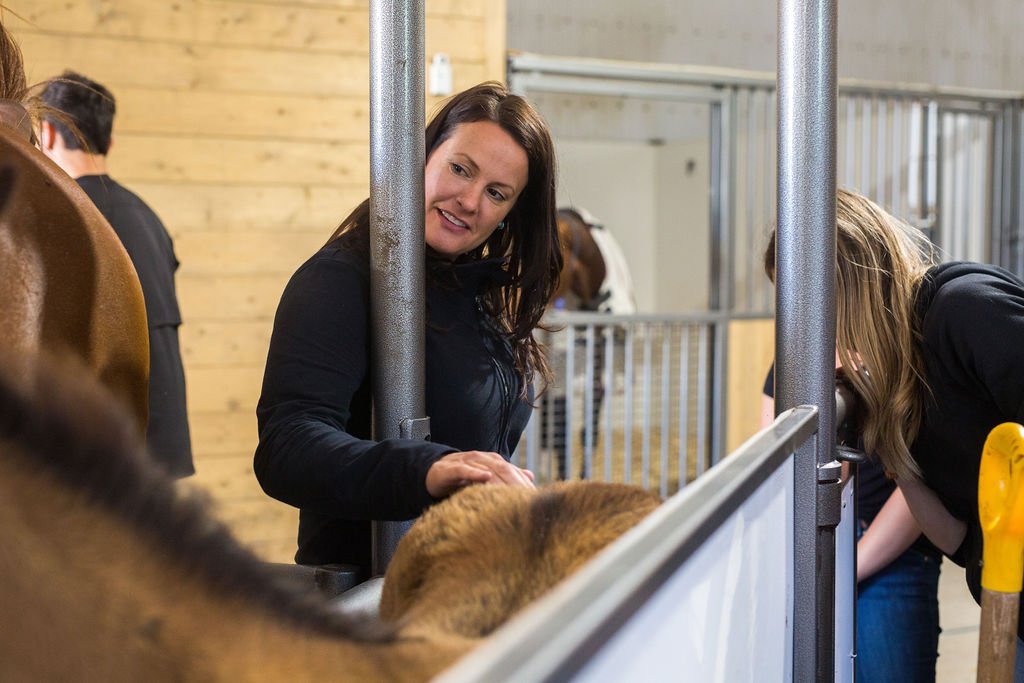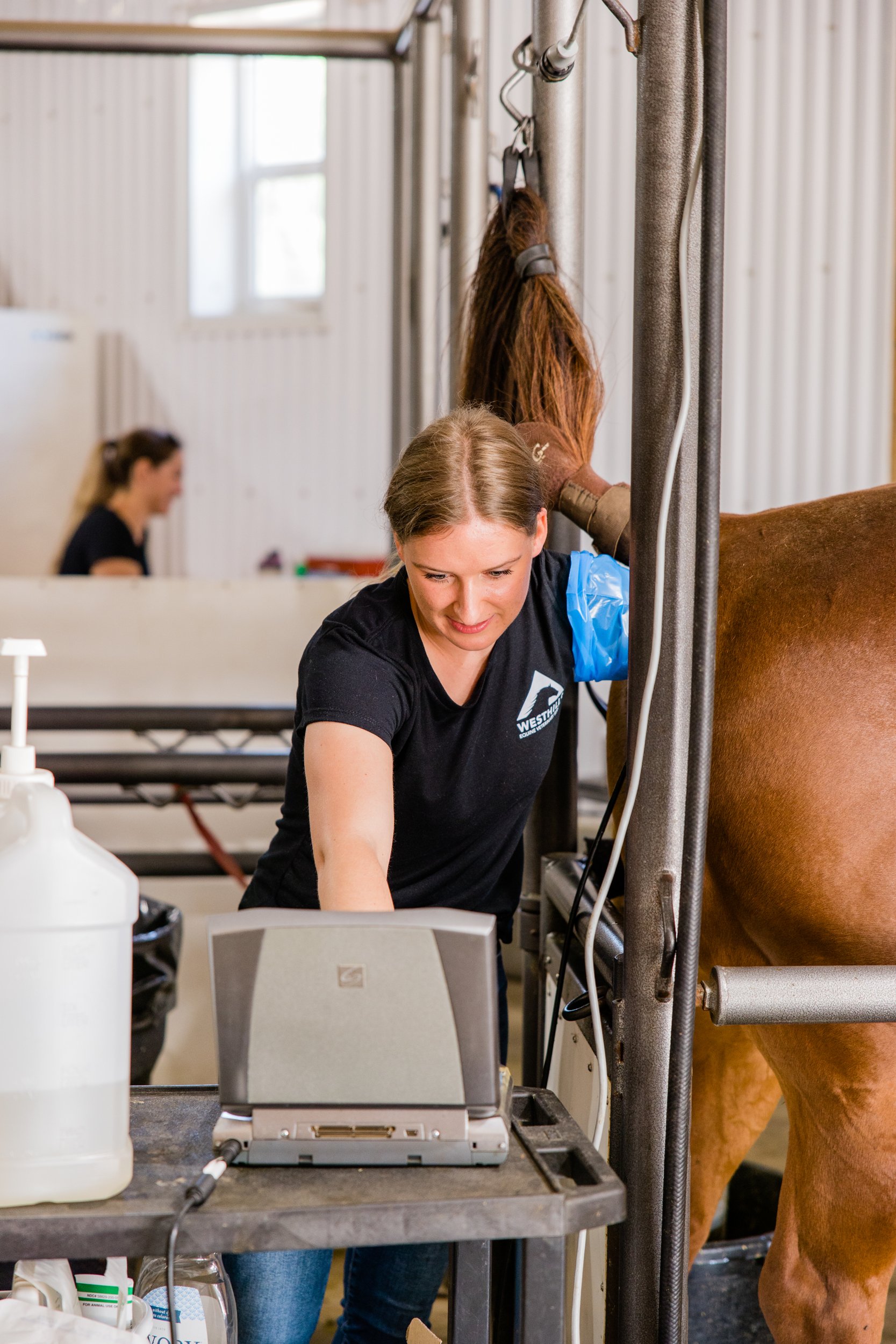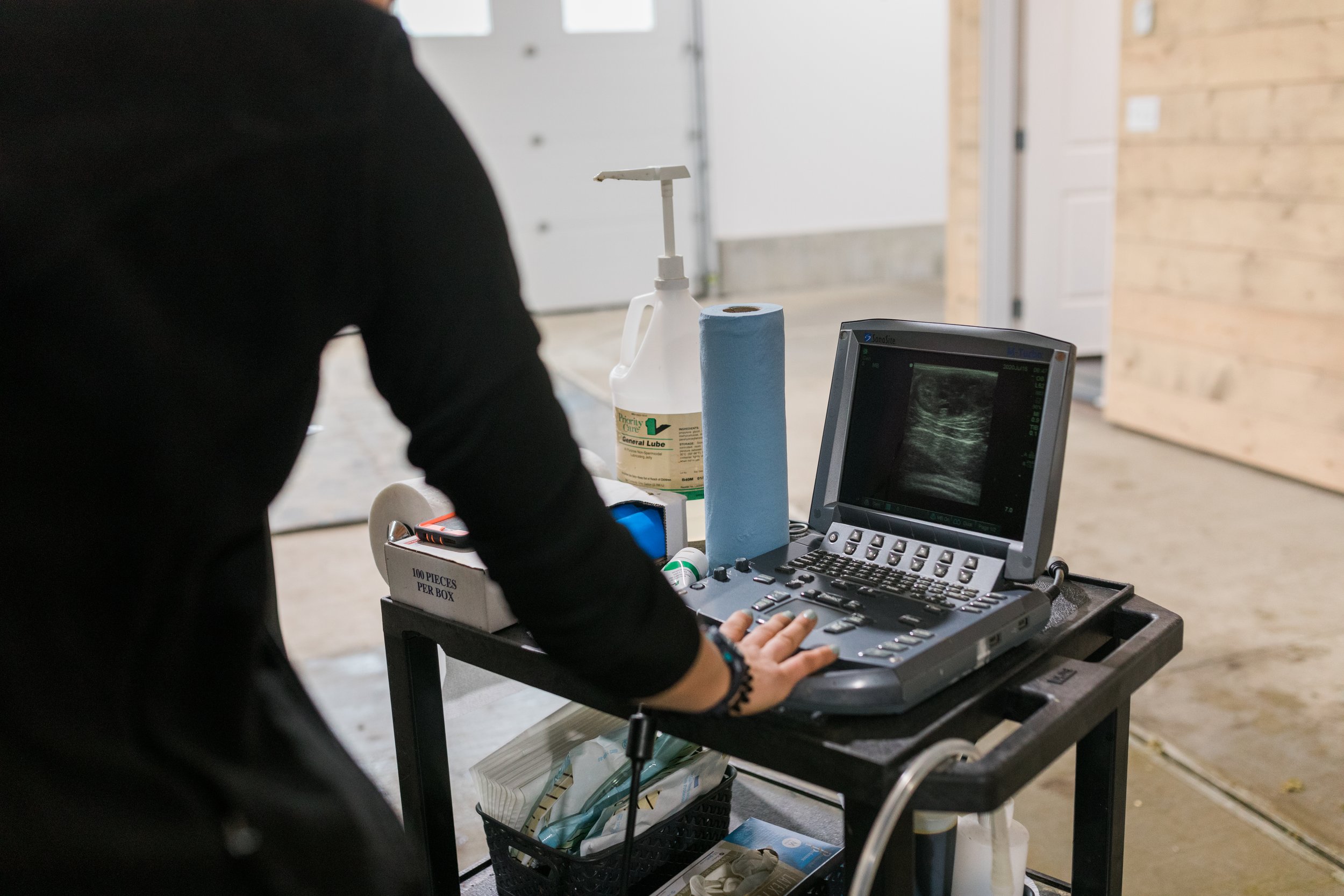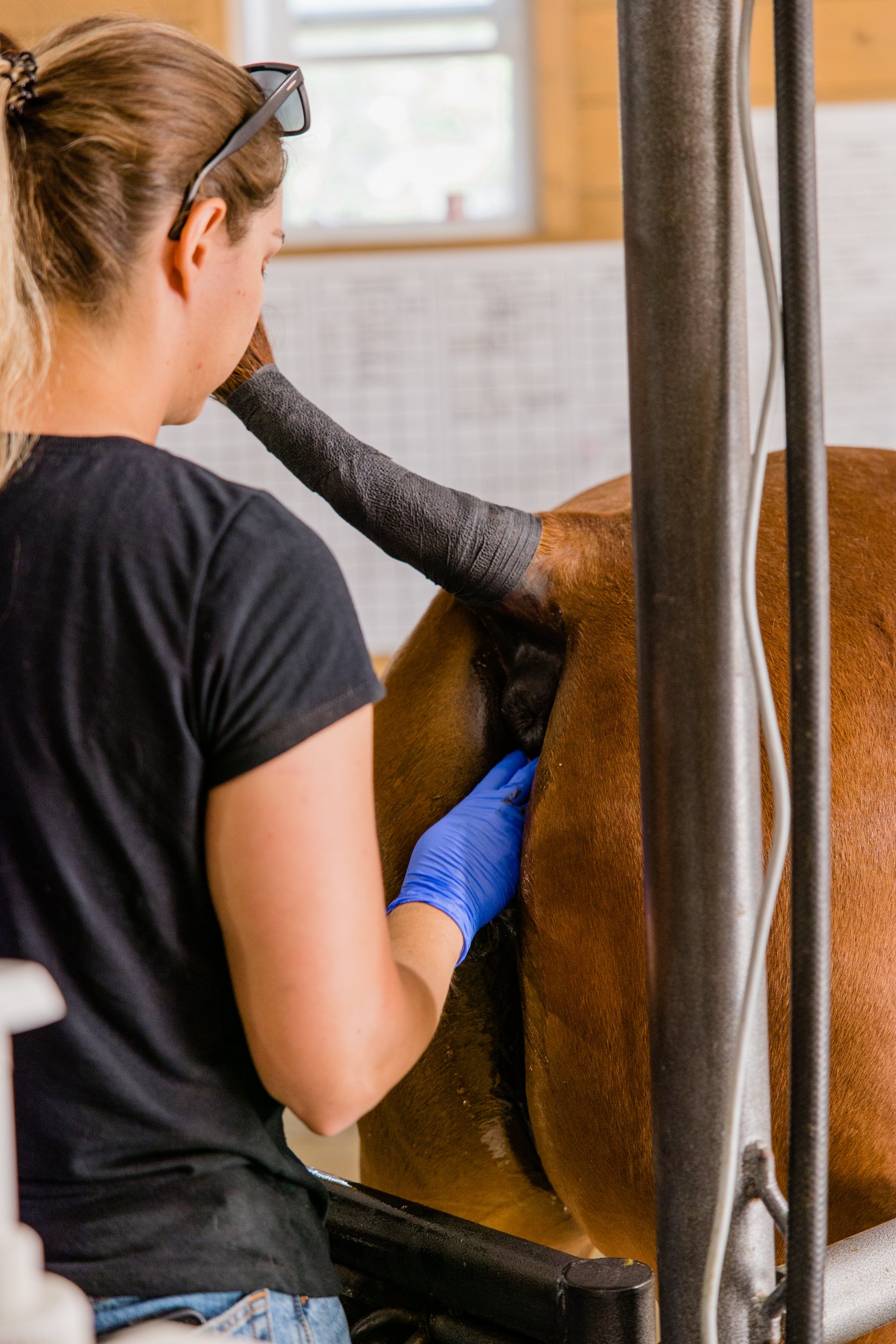Pre-Breeding Preparation
It’s the time of year again that all the anticipation for the upcoming breeding season starts to arise! At Westhills Equine Veterinary Services, we offer specialized reproduction services by dedicated, reproduction focused veterinarians. We have made it our passion to create the next superstar that our clients dream of.
To curb that overwhelming feeling of wanting the best for your broodmare going into the breeding season but not knowing what is required, we have created a “Pre-Breeding Checklist” for mare owners convenience. We highly recommend that your mare arrives to be bred in optimal condition to ensure the highest chance of conception and the healthiest possible pregnancy. If you are preparing to breed your mare this year, there are some important aspects to consider prior to beginning the breeding process.
Vaccinations: It is recommended that your mare be up to date against West Nile, WEE, EEE, Tetanus, Influenza and Rhino. Vaccination of the mare helps provide their foal with the antibodies needed to fight off threatening disease.
Deworming: A spring deworming should be performed 1-2 weeks prior to breeding your mare. A mare fighting for adequate nutrition due to parasite infestation will have a significantly decreased chance of conception.
Dental care: Proven that mares with inadequate body condition due to lack of nutrition have a lesser chance of successful conception and healthy gestation, dental care is especially important for your potential broodmare. A routine float is recommended prior to your mare proceeding through gestation. February is our dental health month with specials happening in clinic, so is a great time to get your broodmare floated!
Farrier care: Even if your broodmares are mostly turned out to pasture and do not perform, a healthy foot and comparative soundness are important to reduce stress for conception and ease mobility throughout gestation. Not only is regular farrier care recommended but also diagnosis and treatment of any lameness issues that may be intensifying potential stress.
Vet Check: Misunderstood by some, there are many factors that play into a successful breeding. We recommend a pre-breeding exam to be performed on one of your mares first heat cycles prior to breeding (exam is done while in heat to ensure the cervix is open). The exam evaluates the eternal vulva, uterus, ovaries and cervix.
Conformation of the vulva and regions surrounding are first evaluated to make sure there is no abnormalities that might predispose the uterus to contamination by fecal material. There should also be a good seal intact between the vulva to prevent aspiration of air which could lead to infections and pooling urine.
A rectal ultrasound is performed to ensure the ovaries are of appropriate size for the time of year as well as to scan for any tumours, cysts or hematomas.
Next, the uterus is scanned and palpated to evaluate size and tone and for any abnormalities including adhesions, tumours , cysts or fluid accumulation.
After palpation, a vaginal speculum is often used to visualize the cervix as well as locate any tears/lacerations, pooling urine, adhesions, fluid accumulations or general inflammation of the vaginal walls. Palpation of the cervix is also necessary to evaluate tone in relation to the cycle, as well as other potential problems.
Procedures can then be performed to look at the uterus on a microscopic level. A uterine culture, cytology and occasionally biopsy are utilized to try and determine if the uterine environment is suitable for maintaining pregnancy.
Expenses can quickly escalate throughout the breeding season, primarily if there are unknown problems that effect the breeding process, so it is helpful to evaluate and diagnose any issues before the season starts in order to minimize these costs and boost conception rates.
Stud arrangements: Once you have chosen your stallion to breed to, arrange and complete the stallions contract ensuring all requirements are met and fees are paid or confirm that there is a credit card in place. If shipping semen in from the United States, confirm your stallion location is on your veterinarians import permit (adding the location to the permit can take 2-4 weeks depending on the time of year) otherwise semen cannot be shipped across the border!
Documents: Ensure your veterinarian has copies of the stallion contract, mare’s registration papers and mare breeding contract, and that there is no other information they require from you. Popular breeding facilities can fill up quickly. If you are breeding with Westhills EVS, it is a great idea to touch base with us so we can ensure we leave a space for you!
Light Therapy: This only applies if you are planning for a late winter/early spring breed. Horses are seasonally polyestrous, which means their natural reproductive cycle coincides with the light-filled days between mid-late spring and late summer, when the environment is optimal for the survival of offspring. Therefore, the length of the day and conjunctive light hours is what triggers a mare to begin cycling. A way to trick your mare into beginning to cycle early is to keep them under lights, also referred to as light therapy, for a certain amount of time during the winter months. Light therapy programs should typically begin around December 1st in order to initiate for a late winter/early spring breeding. 16 hours of light to 8 hours of dark is required to effectively trigger cycling, so light therapy is typically required to be maintained on a normal winters day from just before sunset until 10 or 11pm at night. The light can be wired over a stall or a small outdoor paddock, and must have at-least 200 watt lightbulbs to be effective. A general rule of thumb is that you are able to easily read a newspaper at all edges of the stall or paddock with the light provided. If a small paddock or stall with appropriate lighting is unavailable, there are products like Equilime, which is a blue light face mask that each individual mare would wear for the hours of light past sunset required.
If you are new to breeding and are still feeling unsure or like you have more questions, we have a complete document for breeding your mare that dives deeper into mare selection, stallion selection, breeding options, etc. Please contact us and we’d be happy to send you a copy!





